With 40 earthquakes shaking Palghar since November, students from the epicentre - Dhundalwadi village - are getting classes on quakes in a bid to curb panic and rumour-mongering
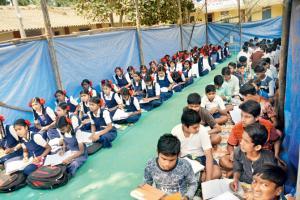
The 18-page manual, published by National Geophysical Research Institute, which is being distributed in all schools, breaks myths about earthquakes and warns students to stay away from trees and electric poles when tremors occur. Pics/Hanif Patel
Palghar: Only 30 minutes before we arrive at the Zila Parishad school in Dhundalwadi village in Dahanu's Palghar district, the ground below had rumbled — not once, but twice. The first time when it occurred at 10.44 am, the 200-odd children, who were studying in the open grounds near the school premises, froze in their places.
ADVERTISEMENT
"It was bhayankar," a local recalled. The second one, at 11.15 am, alarmed the school principal Smita Paghdhare. "I sent all the students home," she says, when we meet her below a shed outside the school building, where only a few minutes ago, classes had been taking place. Paghdhare, who lives in the neighbouring village, has been teaching for 30 years, six years as principal in this ZP school, with classes between Std I and VIII. "But, in all these years, I have never witnessed something like this," she claims. "It's scary. Every day I wake up, thinking that the lives of 260 students are in my hands. It's my responsibility to ensure that they return home safe."
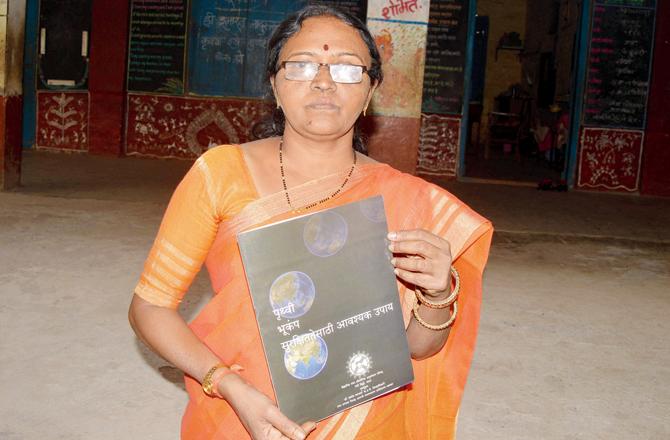
Smita Paghdhare
The school was shut for Diwali vacation when Dhundalwadi first experienced unusual tremors. By the time it reopened in the last week of November, the trembling had become commonplace. "Every few days, we would feel the ground shake. We soon realised that they were earthquakes," Paghdhare says. While the locals of Dhundalwadi — the epicentre — and 16 other villages in the vicinity, had never encountered something of this nature, nearly a year earlier, 60 km from here, in Jawhar, also in Palghar district, the quakes had become a way of life, until it abruptly came to a halt.
When we visited the earthquake-hit region on February 13, the affected villages were still recuperating from the February 1 quake, which at 4.1 on the Richter Scale, was the strongest it had ever witnessed. The brief two-week lull had almost put their deep-seated fears to rest, when at 4 am on the same morning, locals claimed to have felt the tremors again. By 5.30 that evening, Dhundalwadi had witnessed eight tremors. The India Meteorological Department (IMD), however, recorded only two minor earthquakes — one at 10.44 am and the next at 1.12 pm — both ranging between 3 and 3.1 magnitude on the Richter scale.
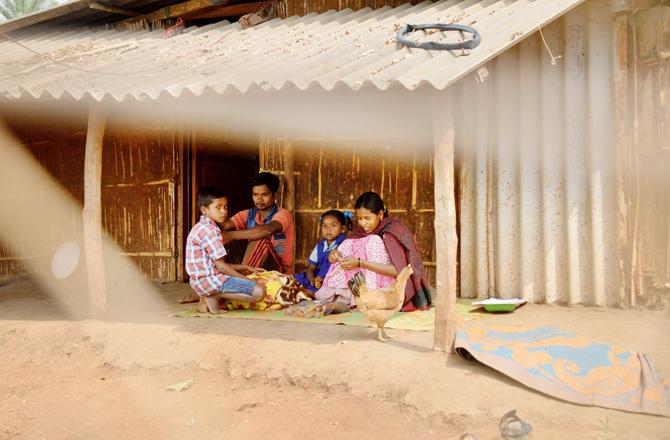
Vaibhavi
Anxious villagers
In November itself, Paghdhare and her seven staff members decided to conduct classes outside the premises. While they initially had trouble convincing parents to send children to school, the earthquakes eventually became too common a phenomenon to bring life to a standstill. They now have nearly 80 per cent attendance. "Cracks have developed inside the school building. Since it was too risky to teach them in the classroom, we chose four spots, one below the shed [in the school] and others in the nearby fields, so that the children could continue their studies.
The villagers are already living in so much fear. It is better that the students come here and study with us," she says, adding that she also changed the school timings from 10.30 am to 7.30 in the morning, so that they could be back home by noon. Only earlier this week, the district collector distributed an earthquake manual at all schools in the affected region. "There isn't a day, when we don't discuss the manual in class. Earthquake has become a new subject now," says 30-year-old ZP teacher Kishore Gorkhana. "This also helps prevent spread of any kind of misinformation or rumour. A lot of parents, unaware of what is happening in Dhundalwadi, have told their kids that the entire village will go down under soon."

When the National Disaster Response Force (NDRF) visited the village last week, the teachers and residents along with members of the gram panchayat were given emergency response training. "We were taught how to get the kids into a safe, open area [getting them to stand in one line, and holding each other by the shoulder]. But, when it happens, our brain just freezes. It becomes very difficult for us to think straight. Imagine what the kids must be feeling. What do we do then?" Paghdhare asks.
Barely 500 metres from the ZP school is the house of 30-year-old Shailesh Gavali, who lives with his wife and one-and-a-half-year-old son. Unlike most of the tribal population, which is into subsistence farming, Gavali has a job at the Indian Oil company. He travels 15 km to work on his bike daily, but these days with trepidation. In the last few months, he has taken several days off from his company. "Sometimes, I come to work, and then have to rush back, if my wife calls, warning me about repeated quakes," he says.
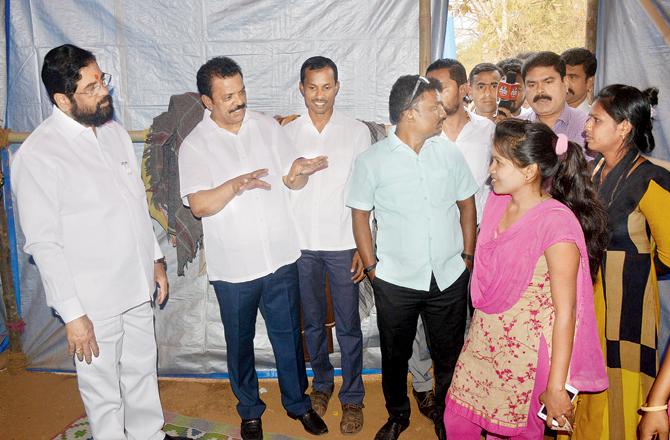
Parents Ramesh and Sundar Bhuyal have been paid a visit by Sena leader Aditya Thackeray, who handed overR40,000 in cash. Another local politician gave Rs 15,000
In December, the family was among the first to build a makeshift house with cardboard, tarpaulin sheets, bamboo sticks and cloth right outside the home, fencing it with dried leaves and branches. "We sleep here at night, under four layers of blankets because the temperatures drop to nearly 10 degrees sometimes," says Gavali. "I have told my wife to sit outside the house, in my absence. When I have a late night shift, my aunt comes here to spend time with them till I return."
What is the govt doing?
Around 12.30 pm, residents in Dhundalwadi were seen making a dash for Haladpada, one of the village blocks (pada), where Shiv Sena leader and state PWD and health minister Eknath Shinde was visiting. He was the first state official to visit the region after the earthquakes began here. Only four days earlier, CM Devendra Fadnavis was in Palghar to review the situation in the village. "We were hoping he would come and visit us, but he did not," says a local, on condition of anonymity. While Shinde, who was representing the Sena, distributed ration and blankets to the locals and spoke about putting up temporary tents of bamboo sticks and tarpaulin sheets in all homes, he said the government was yet to come up with a definitive plan of action. "The government is conducting a survey of the houses that have been damaged, and necessary relief will be provided.
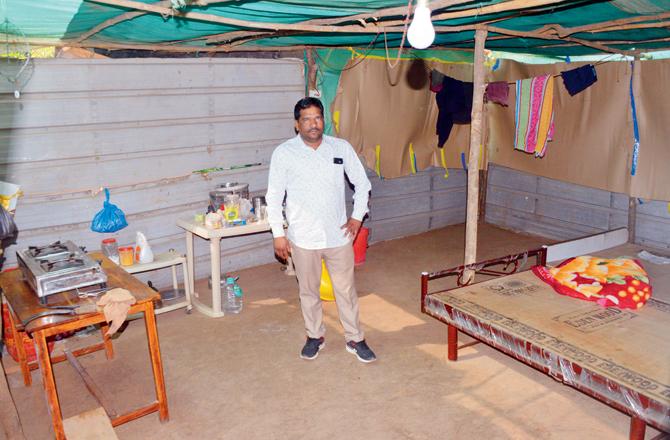
Vasant Kom's home is near the highway, the spot of many accidents. So, he has spent over R50,000 to build a tent in his own farm, 2.5 km away. He and his family drive there every night after 10 pm to sleep
This is a natural calamity, so we need to come together to support the families," he says. Party workers, however, didn't spare a photo-op with the grief-stricken family of two-year-old Vaibhavi Bhuyal, who died in a freak mishap when the earthquake hit Haladpada at 3.55 pm on February 1. The family left soon after, with 10 kg bags of grain and sugar. Vaibhavi's parents Ramesh Bhuyal and his wife Sundar, showed us into their mud home, which faces a small patch of field, where the Sena has put up a tent for the families in their pada. "But, we don't sleep there.
We prefer sleeping outside our house in the night," says Ramesh, who is a rice farmer, but works as a daily-wage labourer during the off season. Their daughter Vaibhavi, the youngest of three children, had been playing in the field, and her mother sweeping the floor in the house, when they felt the tremors on February 1. "My daughter got scared and began running towards home, when she fell on a stone and hurt her head. I was doing some electricity fitting work in another pada. By the time my brother rushed her to the hospital in Dahanu [8 km away] she had already died," he says. Apart from Sena leader Aditya Thackeray, who visited the family last week and handed over R40,000 in cash to Ramesh, and another local politician giving them R15,000, nobody from the government has approached them yet.
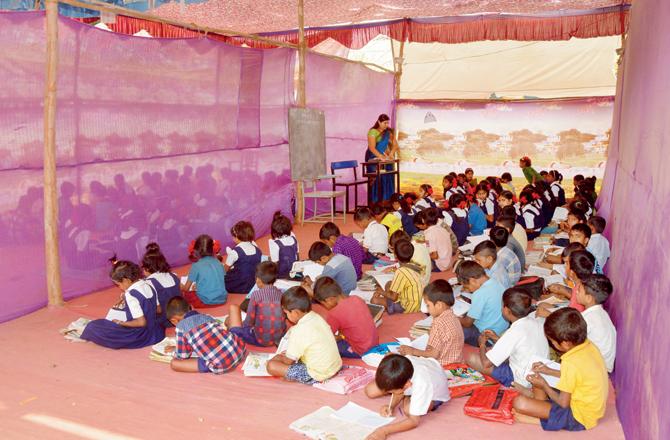
Authorities at Ashram School, Dhundalwadi have built several shamianas within the campus, after one of its walls
Every village in the area is split into several padas, each having over 40 to 50 homes. Dr Prashant Narnaware, collector, Palghar district, said that the government has distributed tents and tarpaulin sheets to all the villagers. An ambulance from the state Primary Health Centre has also been stationed in Dhundalwadi. There is also a tent, where emergency medical treatment is provided. "Since most villagers sleep outside, there is a risk of being attacked by a snake or scorpion. We give anti-venom treatment here. We are also prepared to attend to patients, in case of a stampede-like situation," says Dr Pravin Rathod, a medical officer from the PHC, who was on 24-hour duty at the spot.
But, Chaya Surti, a gram sevak in Dhundalwadi Gram Panchayat, admitted that relief has only come only after Vaibhavi's death. Vasant Kom, 39, who is from the neighbouring village of Karanjvira, which is a kilometre from the epicentre, said that the government has only given one tent for each pada. "Each pada has almost 300 residents, while the tent can barely accommodate 10 to 15 of us," says Kom, who is a farmer, but runs a shop near his house that is situated on the highway. Kom has spent over R50,000 to build a tent in his own farm, which is over 2.5 km from his home. "I can't put up a makeshift tent near the highway, because a lot of accidents take place here. We drive down after 10 pm, and sleep here, as my home has already developed cracks." His tent has all the bare essentials, including a bed, stove and table to eat.
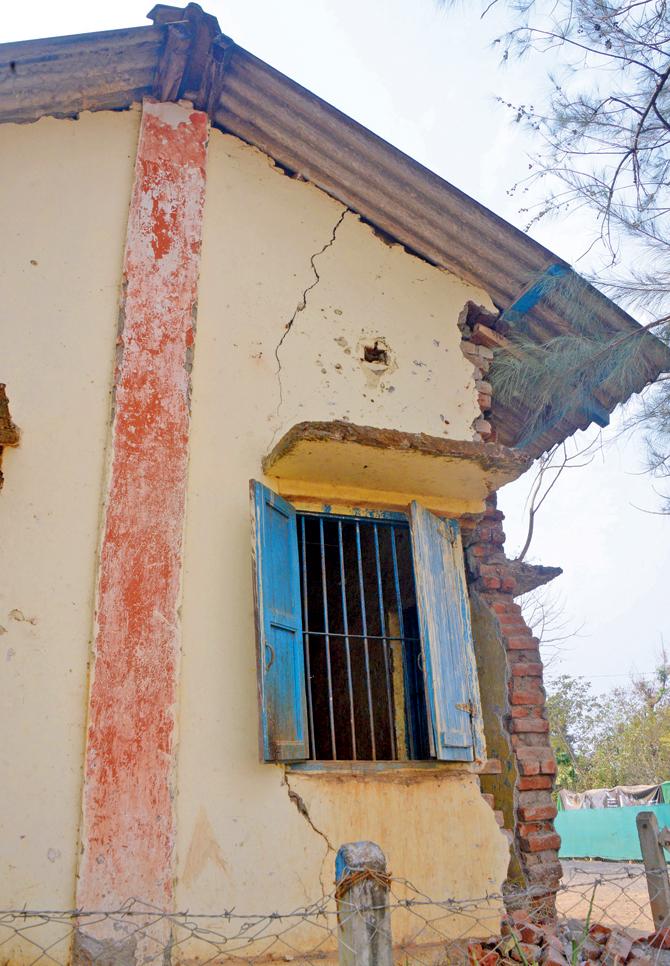
Collapsed last month. As a stop-gap arrangement, classes for students between Std I and X are held here
Not everyone, however, can afford to spend that kind of money on tents. Right across Kom's makeshift house, several elderly villagers sleep outside on the open ground. Septuagenarian Bhiwa Lahne Gavali, who was born and raised in Karanjvira and has never experienced a single quake in his lifetime, is yet to wrap his head around what is happening. His home has developed huge cracks, and as a stop-gap arrangement he has plastered it with cement. "But the cracks widen with every new tremor," he says. "This year, for the first time in so many years, the rain ended before Ganesh Chaturthi. The rain wasn't even accompanied by thundering or lightning. I think bad rain has led to the incessant tremors," he says, providing us an unscientific, yet popular village legend, as explanation.
'Earthquake swarms'
The rain, however, could most likely be the reason for the earthquakes in the region, said Dr Vineet Gahalaut, director of Delhi's National Centre for Seismology (NCS), which is under the Ministry of Earth Sciences. The NCS has set up observatories in three to four villages. In the last three-and-a-half months, the region has seen nearly 40 earthquakes. The pattern of small earthquakes occurring in a brief time span is called an earthquake swarm, says Gahalaut. "Last year, in September, a place close to Amravati witnessed similar swarms during the rain. Like the quakes in Palghar, they were also extremely shallow.
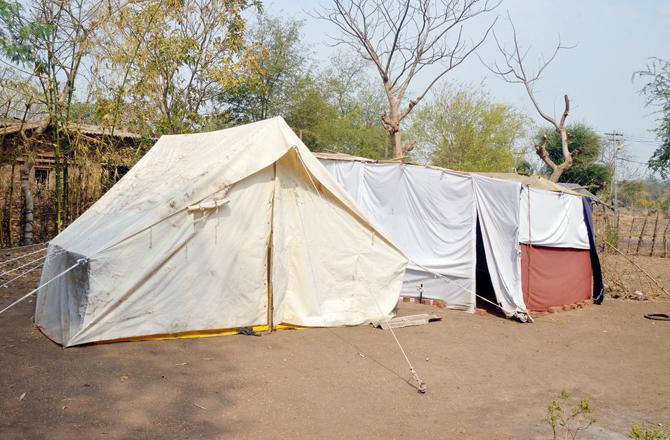
Each pada in the 17 affected villages has been given a tent. While the pada has nearly 300 residents, the tent can barely accommodate 10 persons
Once the rain stopped, the earthquakes stopped. We also observed monsoon-induced earthquake activity in the Saurashtra region of Talala, Gujarat [repeated activity in 2001, 2004, 2007 and 2011]. We suspect it to be a similar case." But unlike the tremors near Amravati, the earthquakes here began right after the rainfall season. "This is because the rain water from the surface may have seeped into the deep cracks in the earth," he says. In science, this is called diffusion; the water raises the pressure inside, causing delayed swarms. "This is, however, just a hypothesis. We are still analysing the rainfall patterns of the region in the last 10 years, and seeing if there is a correlation between the two."
But, Narnaware told mid-day that IIT experts had said that there was a dormant fault line in the region, which had suddenly become active. "The fault line has been releasing energy, causing the tremors," he says. But Gahalaut feels that this is unlikely. "The pattern points to a swarm. As of now, it does not seem like a major earthquake will occur, but we cannot be sure. There is nothing certain about a natural calamity. We are just going by experience and hoping the activity will subside soon."
Author Shubhangi Swarup, who researched tectonics in the Indian subcontinent for her debut novel, Latitudes of Longing (HarperCollins India), which tells the story of lands with geological fault lines — a fracture in the ground that occurs when the Earth's tectonic plates shift — says, "My research involved speaking to various scientists, especially geologists. And one of my biggest personal realisations was that earthquakes don't kill people, poor infrastructure and apathy does."
She adds, "Mike Searle, an Oxford based geologist had told me that the Kathmandu earthquake was a disaster waiting to happen way back in 2013, two years before it occurred. Such information ought to inform civic planning and infrastructure, and if a dormant fault line has activated near densely populated regions such as ours, then it has huge civic and administrative ramifications. Let's acknowledge that when disaster strikes, it isn't the forces of nature, but our own actions that often get us."
Theory of causation
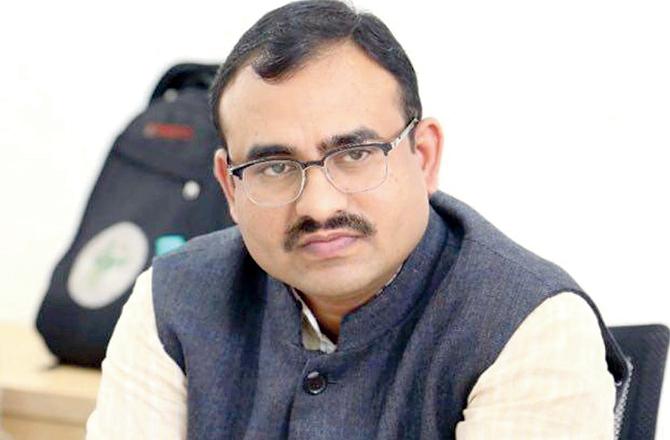
'IIT experts, have said that there was a dormant fault line in the region, which has suddenly become active. The fault line has been releasing energy, causing the tremors'
Dr Prashant Narnaware, collector, Palghar district
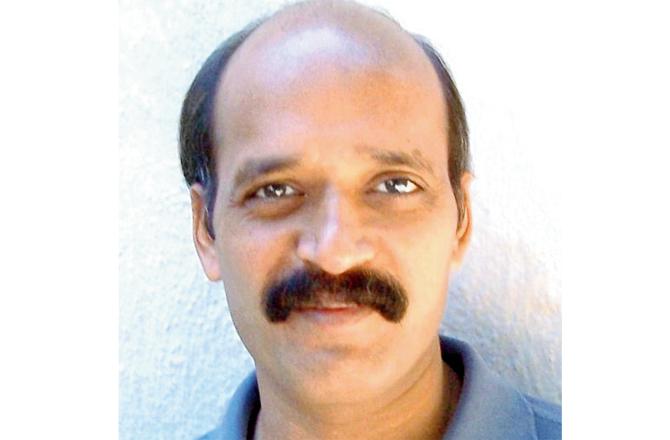
'The pattern points to a swarm. As of now, it does not seem like a major earthquake will occur, but we cannot be sure. There is nothing certain about a natural calamity'
Dr Vineet Gahalaut, director of Delhi's National Centre for Seismology (NCS)
08
No. of tremors that Dhundalwadi witnessed on Feb 13
40
No. of earthquakes the region has seen since November
4.1
The strongest quake on the Richter scale, that the region experienced on Feb 1
Catch up on all the latest Crime, National, International and Hatke news here. Also download the new mid-day Android and iOS apps to get latest updates
 Subscribe today by clicking the link and stay updated with the latest news!" Click here!
Subscribe today by clicking the link and stay updated with the latest news!" Click here!







